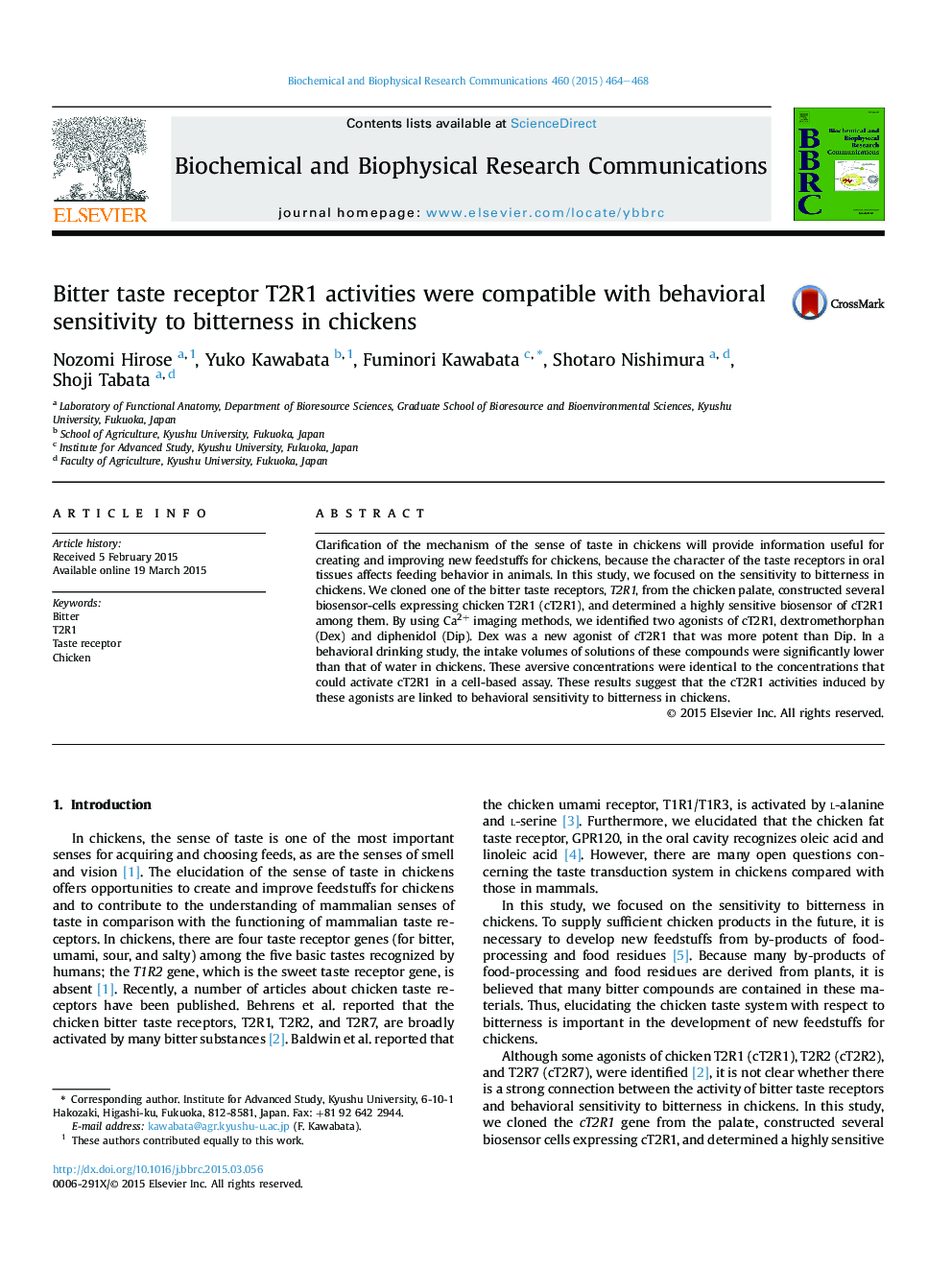| Article ID | Journal | Published Year | Pages | File Type |
|---|---|---|---|---|
| 10752315 | Biochemical and Biophysical Research Communications | 2015 | 5 Pages |
Abstract
Clarification of the mechanism of the sense of taste in chickens will provide information useful for creating and improving new feedstuffs for chickens, because the character of the taste receptors in oral tissues affects feeding behavior in animals. In this study, we focused on the sensitivity to bitterness in chickens. We cloned one of the bitter taste receptors, T2R1, from the chicken palate, constructed several biosensor-cells expressing chicken T2R1 (cT2R1), and determined a highly sensitive biosensor of cT2R1 among them. By using Ca2+ imaging methods, we identified two agonists of cT2R1, dextromethorphan (Dex) and diphenidol (Dip). Dex was a new agonist of cT2R1 that was more potent than Dip. In a behavioral drinking study, the intake volumes of solutions of these compounds were significantly lower than that of water in chickens. These aversive concentrations were identical to the concentrations that could activate cT2R1 in a cell-based assay. These results suggest that the cT2R1 activities induced by these agonists are linked to behavioral sensitivity to bitterness in chickens.
Keywords
Related Topics
Life Sciences
Biochemistry, Genetics and Molecular Biology
Biochemistry
Authors
Nozomi Hirose, Yuko Kawabata, Fuminori Kawabata, Shotaro Nishimura, Shoji Tabata,
